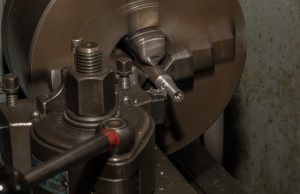
Most types of heavy machines used in the manufacturing industry, including lathes and milling machines, produce vibrations during operation. Also known as chatter, these machining vibrations can often responsible for premature wear and tear. When ignored, the constant vibrations will wear down the machine, which may cause it to fail shortly down the road. But that’s only the tip of the iceberg regarding the effects of machining vibrations.
What Are Machining Vibrations?
Machining vibrations, also referred to as chatter, are forceful vibrations that occur where a workpiece comes into contact with a machine’s cutting tool. Both lathes and milling machines have a cutting tool. It’s the single- or multi-bladed component that presses against a workpiece. Machining vibrations occur at the area where a machine’s cutting tool comes into contact with a workpiece.
Superficial Imperfections
Machining vibrations can lead to superficial imperfections in workpieces. If vibrations persist during a machining operation like turning, milling or drilling, the workpiece may develop imperfections on its surface. These irregularities typically consist of ridges and lines that aren’t found on other areas of the workpiece. Rather, they are only found where the workpiece was exposed to the cutting tool.
Superficial imperfections associated with machining vibrations are so common, in fact, that there’s a name for them: chatter marks. Chatter marks are the visible irregularities created on the surface of a workpiece as a result of machining vibrations.
Machine Failure
Of course, excess vibrations can cause machines to fail prematurely. Lathes and milling machines, as well as other types of machines, often contain thousands of moving parts. Over time, vibrations may cause some of these parts to loosen, crack or otherwise degrade. If not addressed, the machine could fail prematurely as a result of these vibrations.
How Machining Vibrations Are Minimized
Manufacturing companies use a variety of methods to minimize machining vibrations, one of which is to ensure that both the cutting tool and the workpiece are as secure as possible. If either of these components are loose, it may result in excess vibrations.
Choosing the right cutting tool can also help to minimize machining vibrations. Some cutting tools produce more vibrations than others. If vibrations are a problem, a cutting tool in an appropriate size, material and surface treatment can be used.
Finally, there are vibration-suppressing components that many machines support. Using these components, manufacturing companies can further reduce the amount of vibrations produced by their machines.
